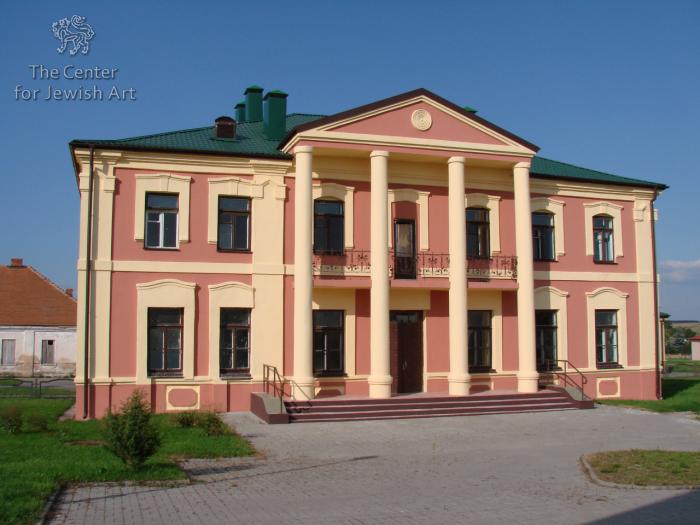

Mir

Mir was the birthplace of Shneur Zalman Shazar (1889-1974), the third President of Israel. The philosopher Salomon Maimon (1753-1800), a pioneer of the Jewish Haskalah (Enlightenment) movement, was born in the village of Zhukaw Barok in the vicinity of Mir.
In the aftermath of World War I and the Soviet-Polish War of 1919-20, Mir became part of Poland. Its Jewish community shrank (as did its overall population), and the census of 1921 listed only 2,074 Jews in the town. The period 1921-1939 saw only a modest increase in the number of local Jews. Nevertheless, the Mir yeshiva thrived: in the 1930s, it accommodated some 500 students, some of whom had come from as far away as the USA, South Africa, and Australia to study in it.
In September 1939, World War II began, and Mir was occupied by the Red Army. The Mir yeshiva relocated temporarily to Lithuania, and in 1940, when that country, too, had been occupied by the Soviets, the yeshiva traveled from Eastern Europe to Japan via the Trans-Siberian Railway, later moving to China. The Japanese consul in Lithuania, Chiune Sugihara, issued transit visas to refugees from Mir and to many other Jews in 1940. His activities are one of the earliest examples of "diplomatic rescue" during the Holocaust.
On June 22, 1941, the Soviet-German War broke out, and Mir was occupied by the Wehrmacht on June 26. On July 20, the occupiers picked nineteen male Jews who belonged to the local intelligentsia and shot them, together with three non-Jewish Communists, in a forest near the village of Simakovo, south of the town. In the following days, a Jewish council was established in Mir; all the town's Jews were required to wear a yellow badge, and forced labor was imposed on Jewish men aged 16-60.
On November 9, 1941, the Nazis carried out a massacre of the Jews of Mir and nearby Turzec: some 1,500-1,600 (or 2,000, according to other sources) Jews were killed on that day. Several days later, a ghetto was established in Mir, with the building of the former Mir yeshiva being incorporated into it. 850 Jewish survivors of the November massacre were imprisoned in this ghetto.
Some accounts also mention a massacre that took place in Mir either on the eve of Purim, March 2, 1942, or in June that year. In any case, sometime between December 1941 and June 1942 the last 800 Jews of Mir were transferred to the dilapidated Mir Castle (which at present forms part of the town), and a new ghetto was set up there. On August 13, 1942, the Germans assembled a large armed force at the castle and shot 560 inmates of the new ghetto in the Jabłonowszczyzna Forest, where pits had been dug in advance. Over the following days and weeks, the Germans caught many Jewish fugitives who had managed to escape from Mir ahead of the final massacre, and killed them. Only some sixty Jews from Mir survived the German occupation.
Mir was liberated by the Red Army on July 7, 1944.


